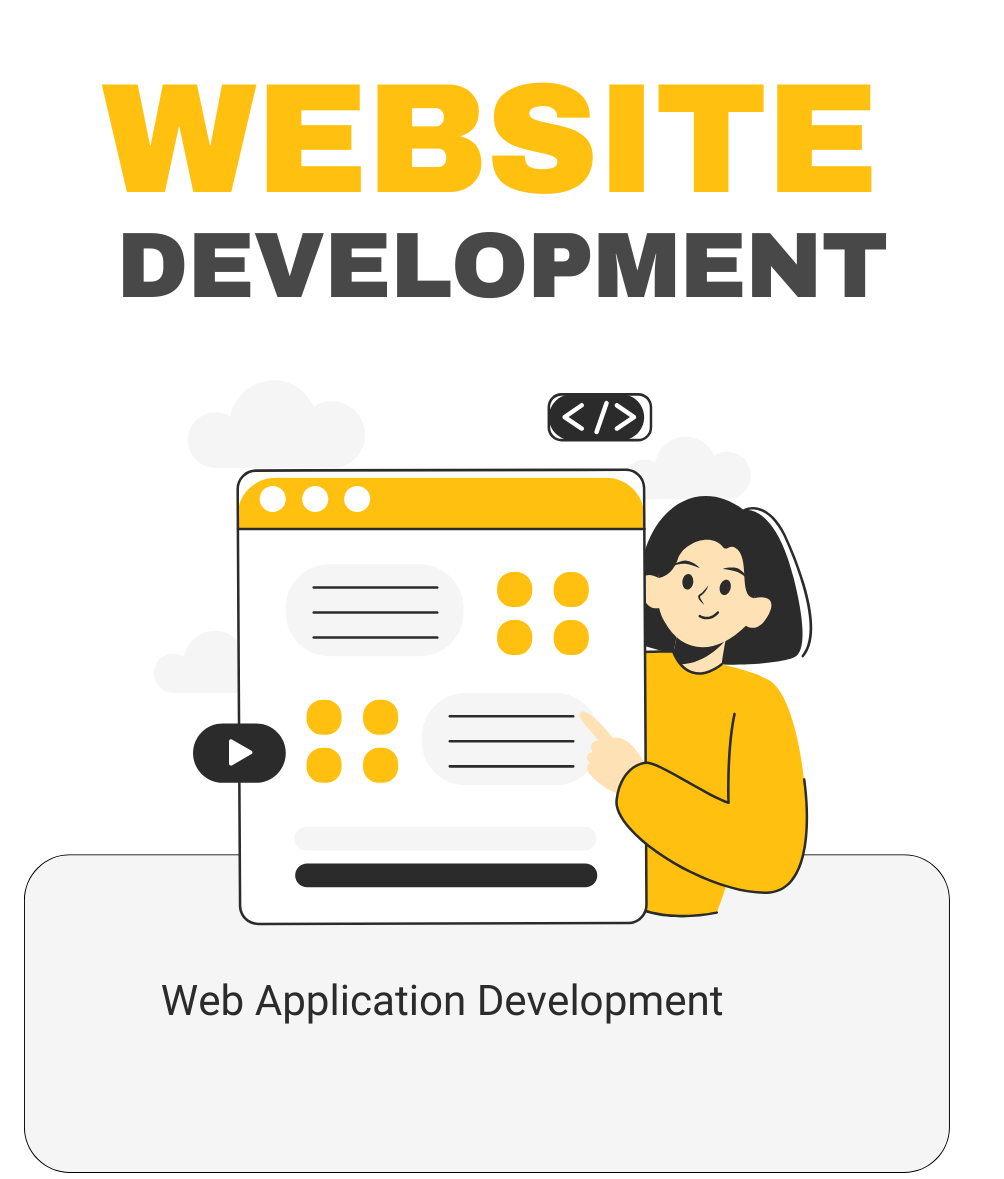Web application development streamlines business operations, offering custom, scalable, and secure software. Keywords: web development, custom apps, secure apps.
Web Application Development for Scalable Business Success
Introduction to Web Application Development
Web application development is the process of creating software applications that run on web browsers. Unlike desktop applications, web apps are accessible from anywhere with an internet connection, offering seamless integration and centralized updates.
From enterprise resource planning systems to customer service portals, businesses across industries rely on web applications to streamline workflows, enhance user experience, and boost productivity.
Why Custom Web Applications Matter
Tailored to Fit Business Needs
Generic solutions often fall short when businesses scale or diversify. Custom web applications are built specifically to match your unique operations, customer needs, and long-term goals. This provides:
- Increased operational efficiency
- Better customer engagement
- Competitive advantage
Businesses benefit from applications that reflect their specific processes, brand identity, and security requirements.
Types of Web Applications
From Portals to Progressive Web Apps
- Static Web Applications – Simple pages with fixed content
- Dynamic Web Applications – Content and interface change based on user interaction
- E-commerce Web Applications – Designed for online selling
- CMS Web Applications – Allow easy content management (e.g., WordPress)
- Portal Web Applications – Dashboards for users with login access
- Progressive Web Applications (PWAs) – Mobile-first, fast, and offline-capable
Each type serves different business use cases, so choosing the right model is essential for success.
Key Stages of Web Application Development
From Concept to Launch
- Requirement Analysis
- Wireframing & Design
- Frontend & Backend Development
- Database Setup
- Testing (QA & UAT)
- Deployment & Launch
- Maintenance & Updates
Following an agile approach allows for flexibility, ensuring that the app evolves with your business needs.
Tech Stack for Web Application Development
Building with the Right Tools
A well-selected tech stack enhances performance, security, and scalability. Commonly used tools include:
- Frontend: React.js, Vue.js, Angular
- Backend: Node.js, Django, Ruby on Rails
- Databases: PostgreSQL, MongoDB, MySQL
- DevOps Tools: Docker, Kubernetes, Jenkins
Choosing the right stack depends on application goals, expected traffic, security needs, and developer expertise.
Benefits of Custom Web Applications
Advantages Beyond Off-the-Shelf Software
- Scalability: Easily adapt as your business grows
- Security: Tailored protocols for sensitive data
- Efficiency: Automates repetitive tasks
- Cross-platform access: Accessible on multiple devices
- Better integration: With internal systems like CRM, ERP
For service-based firms, custom web applications can streamline project management, invoicing, and customer interaction.
Common Challenges & How to Overcome Them
Navigating Development Pitfalls
1: Scope creep
Solution: Clear documentation and milestone tracking
2: Performance issues
Solution: Optimize code, use CDNs, and enable caching
3: Data security
Solution: Use HTTPS, encrypt data, and implement role-based access
Partnering with experienced development teams helps avoid these issues from the start.
Cost Factors in Web Application Development
What Influences the Budget?
Several variables influence cost:
- App complexity and number of features
- UI/UX design customization
- Tech stack used
- Third-party integrations
Maintenance and scaling costs
Enhancements for Scalable Applications
Features That Future-Proof Your App
To ensure your app stays competitive and relevant:
- Implement AI and machine learning for smart analytics
- Use cloud hosting for elasticity and uptime
- Enable multi-language support for global reach
- Add offline capabilities via service workers
Ongoing enhancements keep your app robust and user-friendly in the long term.
Why Choose Professional Development Services
Expertise Makes the Difference
Working with a professional team like Growvilo Web Application Development Services ensures:
- Strategic planning and consultation
- Transparent communication
- Scalable architecture
- Post-launch support
You can also contact Growvilo for custom development needs or learn more about the company.
Conclusion
Web application development is not just about coding — it’s about crafting experiences that streamline operations, delight users, and support growth. Whether you’re a startup or an enterprise, investing in custom web development can yield long-term returns and agility.
FAQs
1. What is a web application?
A web application is software that runs on a web browser and is accessed via the internet. Examples include email platforms, CRMs, and online stores.
2. How long does it take to develop a web application?
It typically takes between 3 to 9 months depending on the complexity, team size, and project scope.
3. Is a custom web app better than off-the-shelf software?
Yes, custom apps are tailored to your exact needs, offering better scalability, performance, and security.
4. What technologies are used in modern web app development?
Modern web applications use React, Node.js, MongoDB, AWS, and Docker for performance, speed, and scalability.
5. How can I get started with a web app project?
Start with a consultation with an experienced provider like Growvilo to discuss your goals and technical requirements.
References (Working External Links)



